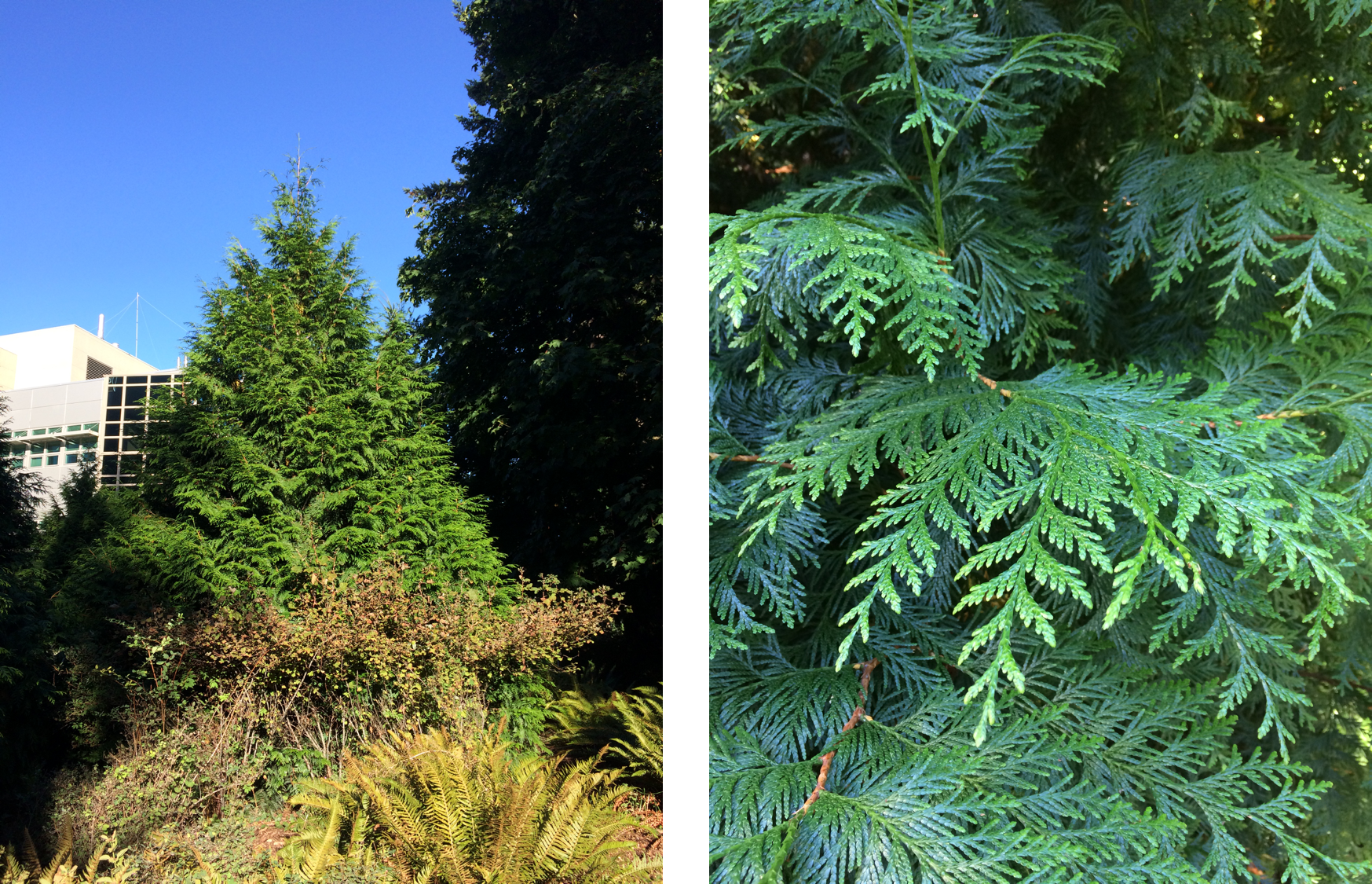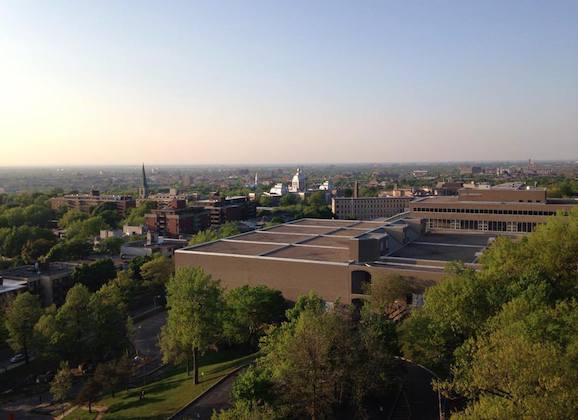My Natural Habitat
So, I really like plants. Trees, flowers, ferns, vegetables, wild berries… you name it. As I go about my daily life, I can’t help but notice all of the different plant species around me, and I’m always intrigued to learn more about them — their names, their uses, their history. Knowing and understanding my natural surroundings gives me a much stronger sense of place and belonging. It makes me feel connected to the land, and fosters my appreciation for how beautifully diverse and complex this world truly is.
Inspired by my passion for plants, I challenged myself this past summer to learn to identify all of the native trees in my home-province of Nova Scotia. It initially seemed like a daunting task, but I was lucky enough to be living and working at Kejimkujik National Park, where I spent the majority of my waking hours outdoors. Consequently, I became quite familiar with the forest, and by the end of the summer, I could confidently identify almost any tree that I came across. Admittedly, I was very proud of myself. I took advantage of every possible opportunity to show off my new tree ID skills to friends, family, park visitors… anyone who would listen, really.
One minor detail that I may have overlooked, however, was the reality of my fast-approaching cross-country move to Victoria. Upon my arrival here at UVic in early September, it immediately became apparent to me that all of the trees on Canada’s West Coast are vastly different from the East Coast trees that I had come to know and love. All of a sudden, I was surrounded by unfamiliar forests of towering evergreens, lush ferns, and dense mosses. Everywhere I looked were strange, foreign looking plants that I knew nothing about. Honestly, it felt quite intimidating, and I knew that I had to do something about it.
Fortunately, UVic’s campus is brimming with native plants and old-growth trees, so I had the perfect sample area to begin my studies. Armed with my roommate’s 1948 field guide to the trees of British Columbia, and a free app called Biodiversity of the Central Coast, I set off.
On a wander around campus, there are many natural spaces to discover and explore…
Mystic Vale:

A patch of magical, pristine forest located right at the edge of campus. An ideal place to find some solitude, breathe in the fresh forest air, and contemplate the universe.
The Quad:

The very heart of campus; essentially a wide, open field surrounded by trees, with a picturesque fountain at the far end. This place is normally alive with streams of students travelling to and from classes, and clusters of friends studying/relaxing on the grass or by the fountain.
Native Plant Garden:

Native Plant Garden — located in the courtyard outside of the David Turpin Building, this ornamental garden is your one-stop shop for a wide diversity of native trees, berries, flowers, and more.
Within these natural spaces, I managed to find and identify a plethora of British Columbia’s native trees and plants. So, in the name of science, and in pursuit of my endless desire for botanical knowledge, please enjoy this modest introduction to my new West Coast habitat.
Trees:
Western Red Cedar is the provincial tree of British Columbia. Sometimes referred to as the ‘tree of life’, it is culturally and spiritually significant to many coastal indigenous peoples, who used all parts of the tree from the inner bark to the thinnest branches. Cedar wood is extremely durable and resistant to weathering, so it was traditionally used for carving dugout canoes, paddles, and house planks, while the long, thin branches were used for weaving baskets or rope.
The wood and bark of the Douglas Fir are known to be an excellent, slow-burning fuel source, as it’s naturally resistant to damage from wildfires. With distinctive tufts extending from the scales of its seed cones, some traditional stories liken these tufts to the tails of small animals seeking protection from the Douglas Fir in the case of fire.
Big Leaf Maple only occurs in a small, South-Western corner of coastal British Columbia. Indigenous people of the Interior occasionally used its sap for syrup, however, the sugar content is quite low, so large quantities would have to be boiled extensively to produce even a small amount of syrup.
Arbutus is most easily recognized by its unique, colourful bark! When the tree is young, its bark is smooth and light green, then slowly ages to a reddish brown before peeling off in crisp, burgundy shreds. The mature bark eventually becomes solid and dark brown-red.
The (very wordy) scientific name for Yellow Cedar references the Nootka Sound on the West Coast of Vancouver Island, where this tree was first discovered. The wood is very valuable because of its straight grain and rich, yellow colour.
Garry Oak is an essential, keystone species in a unique type of local ecosystem called a Garry Oak Meadow. Coastal indigenous peoples maintained these ecosystems through the practice of burning underbrush to promote ideal growing conditions for Camas flowers, which were a staple food source. The acorns of Garry Oak trees can also be eaten either roasted or steamed.
Ferns:

An assortment of ferns! From left to right: Sword Fern – Polystichum munitum, Bracken Fern – Pteridium aquilinum, Maidenhair Fern – Adiantum pedatum
Berries:

And some wild berries…From left to right: Oregon Grape – Mahonia aquifolium, Snowberry – Symphoricarpos albus, Himalayan Blackberry – Rubus armeniacus (Note: this is a non-native species! It is actually highly invasive, although also very delicious.)












Nice post, this resonates so much with me! Similarly to you, I’m from the East Coast and have spent time working in Fundy National Park, where I’ve also learned much about plants, especially trees. When I first came to the West Coast, I was overwhelmed by the unfamiliar plants and at first felt quite lost. These past few years, I’ve consulsted my plant guide intently and now feel more at home here. It’s so nice to hear of someone experiencing something similar! Thank you for sharing.
I’m so glad that you can relate, Lena! It’s always nice to connect with other plant-lovers. I constantly catch myself repeating plant names in my head as I walk around campus- I will need to say them with confidence a couple of times to really remember what’s what! I am certainly beginning to feel more at home though, as I develop a better connection with the environment around me. Nonetheless, our beautiful East Coast flora will always hold a special place in my heart. 🙂
I think the unidentified one could be St. John’s Wort!